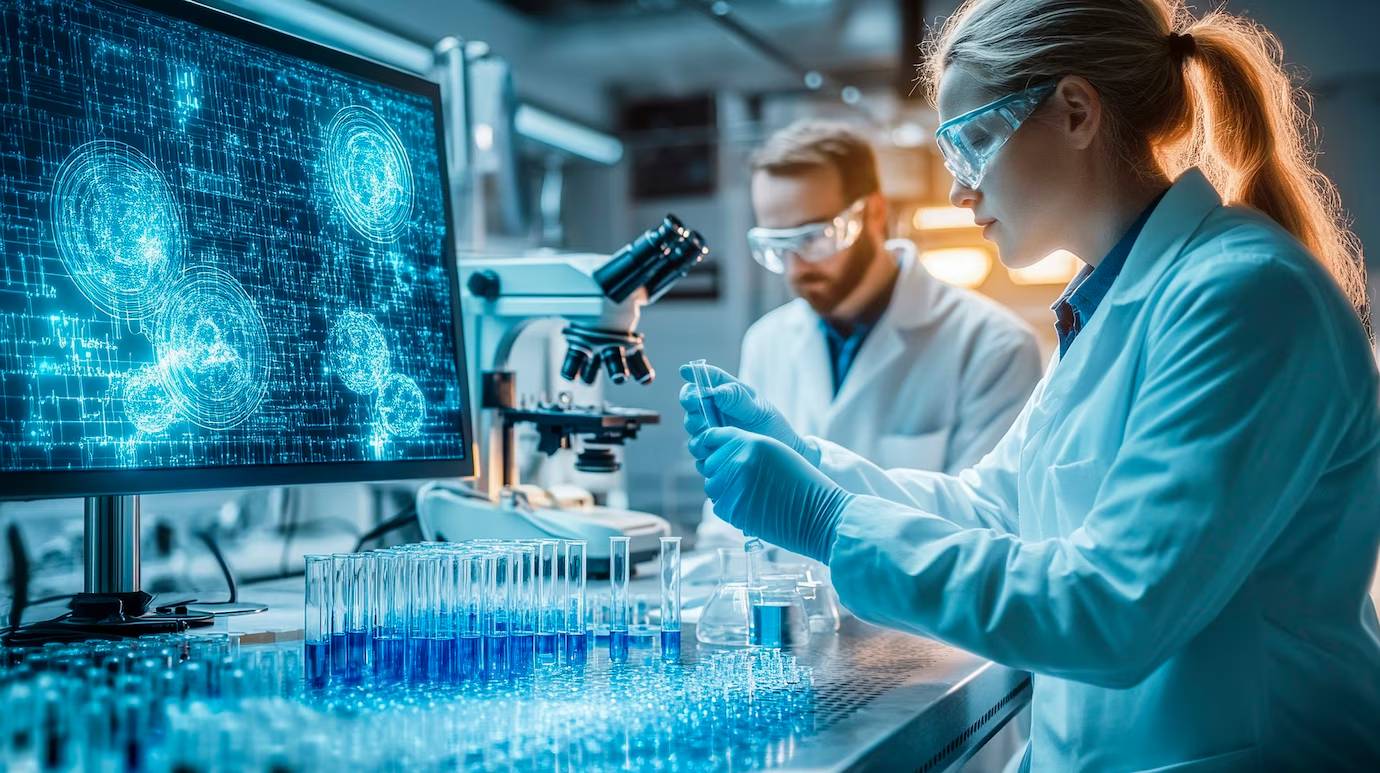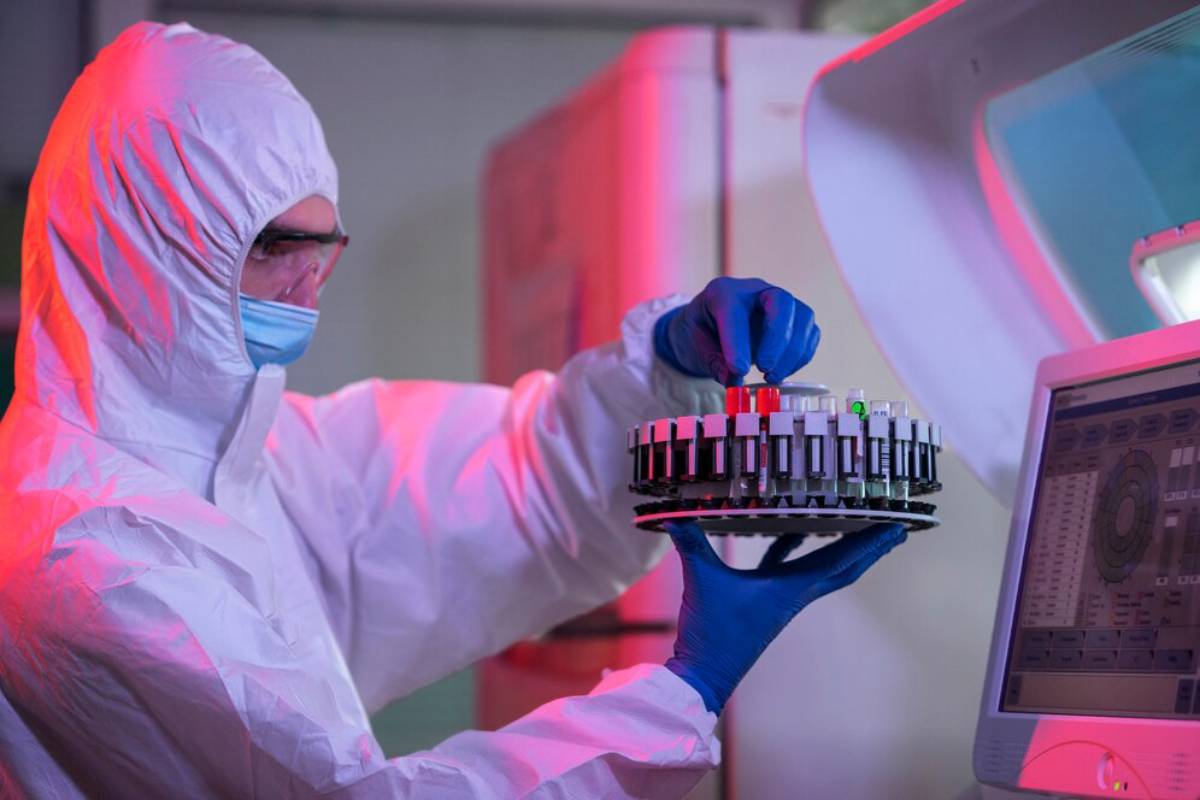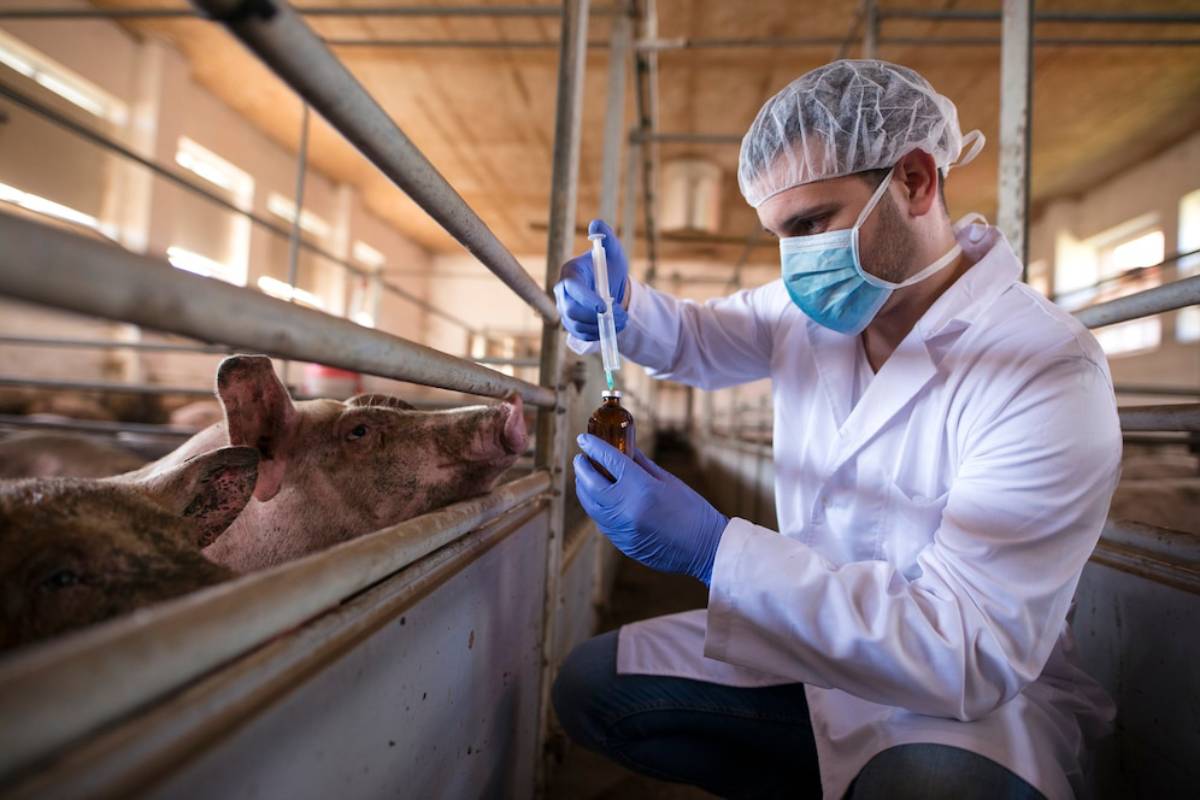
CRISPR in Livestock: Enhancing Animal Health & Food Security
Genetic engineering has made great progress recently. CRISPR technology is now a game-changing tool. In agriculture, CRISPR can improve livestock health and strengthen food security. This blog explores how CRISPR can change animals. It looks at gene editing in livestock and what this means for biotech in agriculture.
The importance of CRISPR in livestock cannot be overstated. As the world’s population grows, more people want healthy, sustainable food. Traditional breeding methods, while effective, are time-consuming and often limited in scope. CRISPR plays a key role here. It provides a precise, efficient, affordable way to enhance livestock breeds. CRISPR technology has great potential, but it also raises controversies and ethical questions. We will explore these issues in this analysis.
Key Benefits
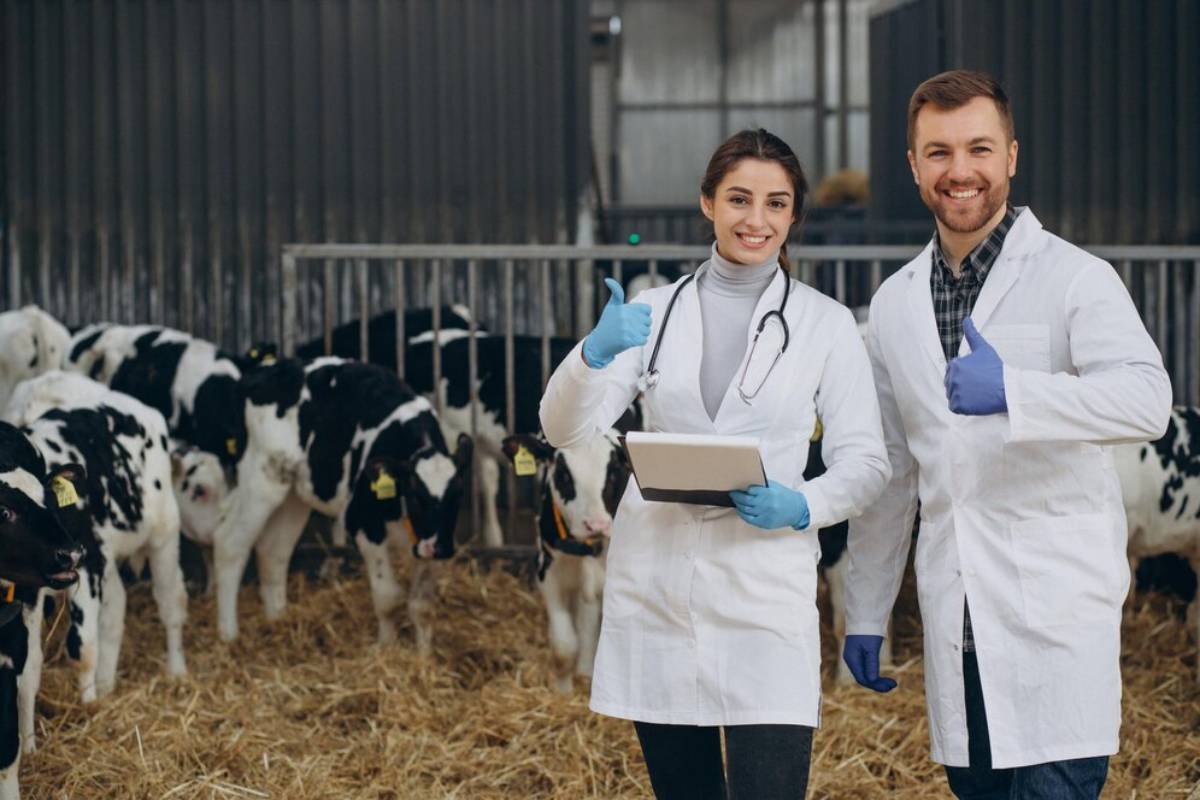
Revolutionising Animal Health
The primary of CRISPR in animals is its ability to enhance animal health. Scientists use precise benefit gene editing to create livestock that resist diseases, which cuts down on the need for antibiotics and other veterinary care. Scientists also used CRISPR to create pigs that can resist Porcine Reproductive and Respiratory Syndrome (PRRS), which costs the swine industry billions every year. This helps animals and saves money for farmers.
Also, CRISPR can help remove genetic disorders in livestock. This way, animals can live longer and healthier lives. These improvements lower death rates and boost productivity. This is key to achieving food production goals.
Boosting Food Security
Gene editing livestock has far-reaching implications for global food security. CRISPR technology can boost food production efficiency. It creates breeds that grow faster, produce more milk or eggs, and need less feed. Dairy cows can be engineered to produce milk with more protein. This meets nutritional needs without needing more cows. Such advancements are crucial in addressing the food demands of a burgeoning population.
Also, CRISPR helps create livestock that can do well in different environments. This is especially important for areas dealing with climate issues. It enables local food systems and cuts down on imports.
Environmental Sustainability
Biotech in agriculture, especially with CRISPR, can lead to sustainable farming. Genetically engineered animals, such as cattle that make less methane, can reduce farming’s impact on climate change. This fits with global goals to cut greenhouse gas emissions and supports a more sustainable future.
Also, better feed-to-meat conversion rates lower the resources needed to raise livestock, including less water, land, and feed. This contributes to conservation efforts and promotes responsible use of agricultural inputs.
Additional Expert Tips & Common Mistakes to Avoid
Best Practices in CRISPR Application
To make CRISPR work well in livestock, we must follow best practices, which require careful research and testing. We must confirm that gene edits are safe and effective. Scientists, veterinarians, and farmers must also work together. This teamwork helps align their goals and tackle real-world challenges.
It’s essential to set clear rules for gene editing. This includes risk assessments, long-term monitoring, and being open with data. This helps create a strong base for expanding CRISPR applications. It also ensures we keep ethics and the environment in mind.
Common Misconceptions
A common myth about CRISPR in animals is that it creates “Frankenstein” creatures. CRISPR technology makes exact changes to the genome. It often copies natural mutations that might happen over generations. CRISPR doesn’t add foreign DNA. This sets it apart from traditional genetic modification methods.
Another myth is that gene editing replaces the need for regular animal care. CRISPR is a helpful tool. It enhances existing agricultural knowledge and methods instead of replacing them.
Ethical Considerations
The ethical implications of gene editing livestock cannot be ignored. We must address concerns about animal welfare, biodiversity, and unintended consequences. Regulatory bodies must create strong frameworks that meet ethical standards and encourage innovation in the field.
We must talk with ethicists, animal rights advocates, and the public. This will help ensure that gene editing practices match society’s values. Transparency and accountability are key to keeping public trust while technology evolves.
Advanced Insights
Integrating CRISPR with Traditional Breeding
Experts recommend combining CRISPR with traditional breeding methods to get the most from CRISPR in livestock. Combining CRISPR’s precision with conventional breeding’s genetic diversity can create resilient livestock, helping develop breeds that thrive in various environments.
This hybrid method keeps important genetic traits and adds functional improvements. It supports both short-term gains and long-term sustainability in animal agriculture.
Investing in Research and Development
We need to keep investing in research and development to unlock CRISPR’s potential in animals. This includes money for basic research to understand gene edits’ long-term effects. It also covers applied research to improve CRISPR techniques for various livestock species.
Public-private partnerships can be key in pushing this research forward. They help turn scientific discoveries into real-world applications. Supporting interdisciplinary collaboration will also accelerate innovation and problem-solving across the livestock sector.
Emphasising Education and Public Engagement
It’s essential to teach the public about CRISPR’s benefits and risks. This knowledge is key to its acceptance and success. Workshops and seminars can help people understand the technology better and address any concerns. Stakeholders can build trust by having informed talks. This support helps ensure CRISPR is used responsibly in agriculture.
Involving farmers in education is key. They are the main users of this technology. Providing them with resources, training, and case studies will allow them to use CRISPR safely and effectively.
Conclusion: Enhancing Animal Health & Food Security
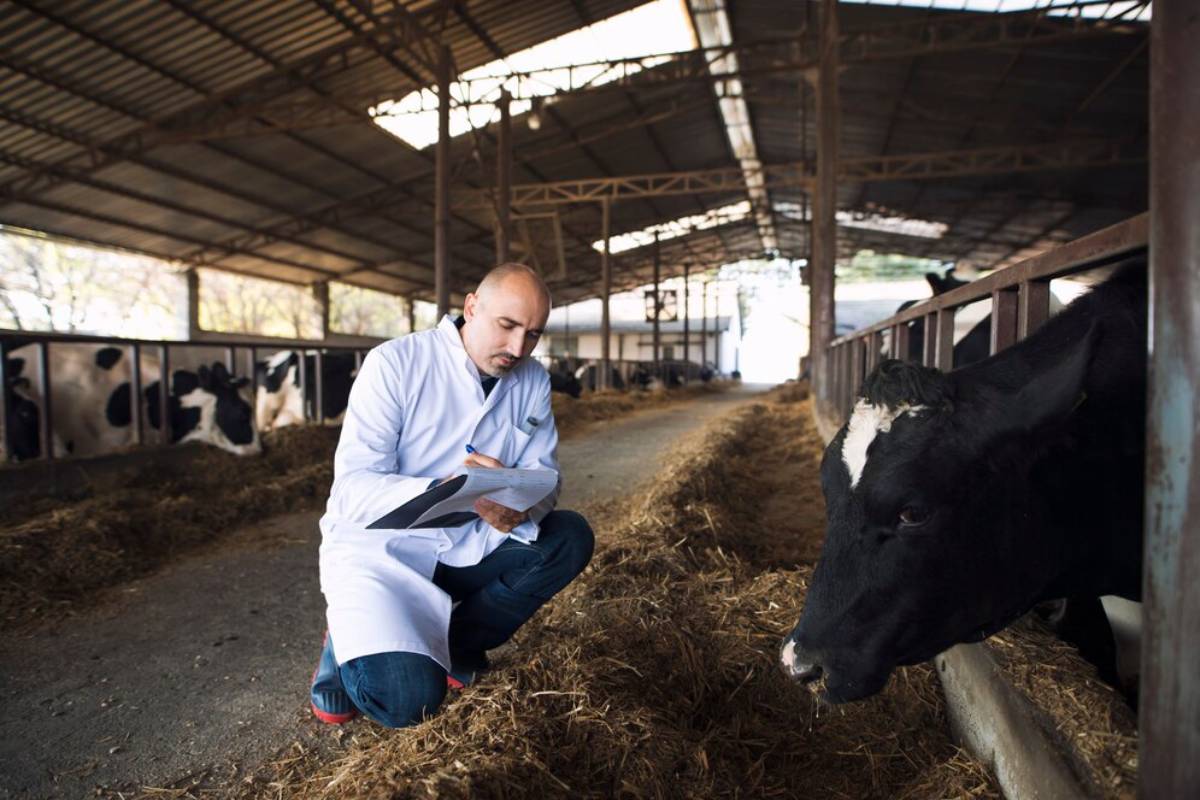
CRISPR can improve animal health and food security by editing livestock genes. It can also help make farming better and more efficient, and change how we breed livestock. However, to realise its potential, we must tackle ethical issues, fund research, and engage the public in important talks.
Let’s embrace the opportunities CRISPR offers while staying alert to its challenges. This will help us create a future where biotech in agriculture meets the needs of a growing population and reflects our values of sustainability and animal welfare.
Are you ready to explore the possibilities of CRISPR in your agricultural practices? Join us and be part of the biotech revolution, which is changing the future of food and farming.

